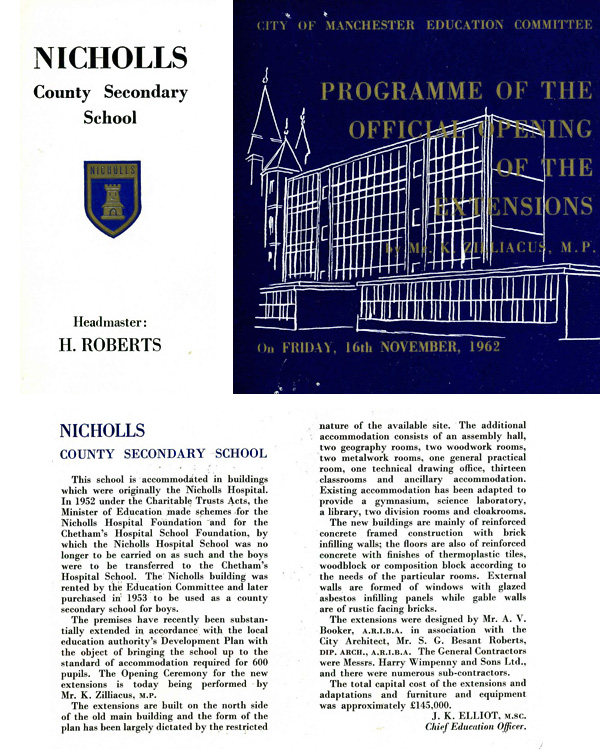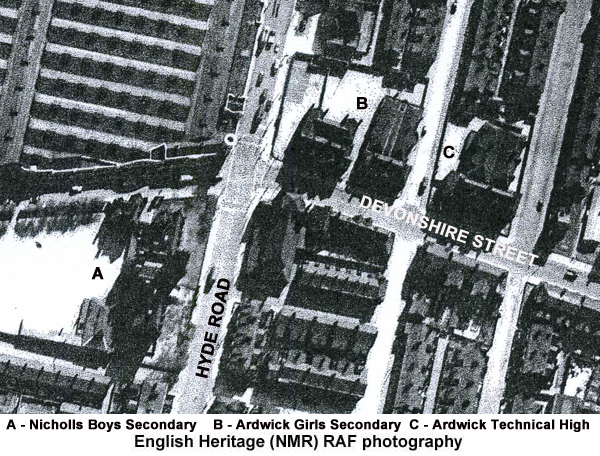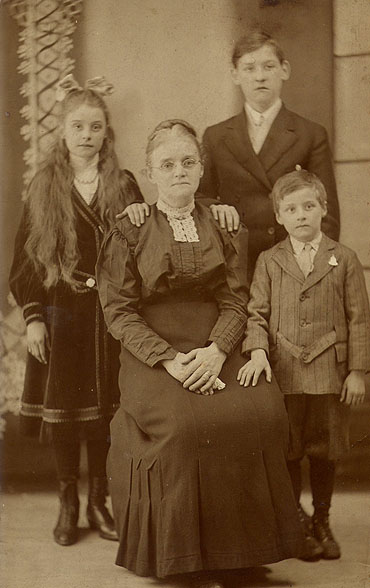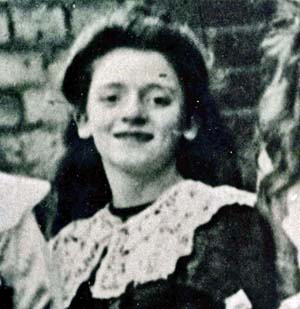Nicholl's Campus of City College - The former
Nicholl's Hospital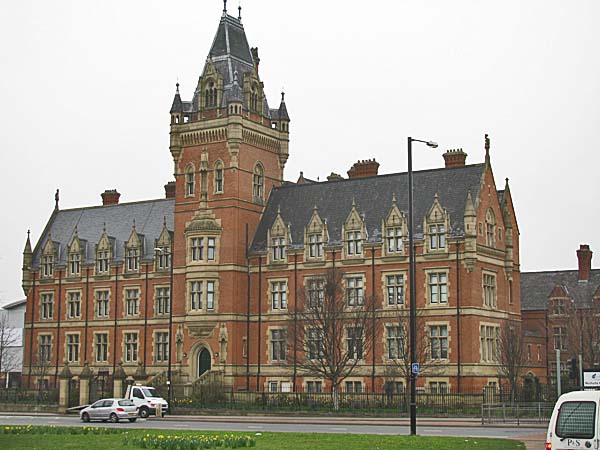 This rather magnificent
gothic building on the corner of Hyde Road and
Devonshire Street, in Ardwick, is the former Nicholl's
Hospital. It was designed by the architect Thomas
Worthington and built in 1879.
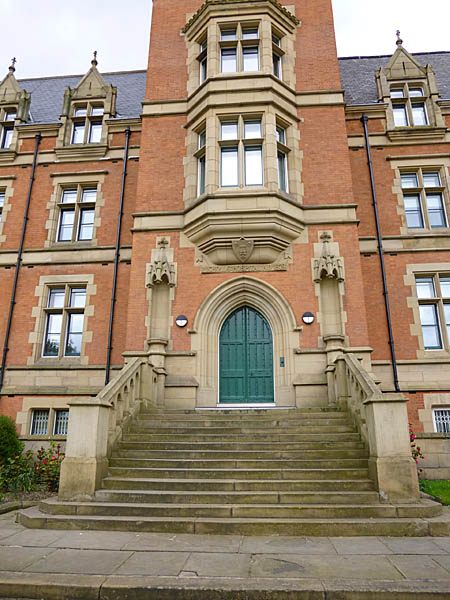  Worthington was the son of a Salford
cotton merchant active in the Unitarian Church.
 He was articled as an architect to Henry Bowman and set up his own practice in Manchester in 1849. I went to school in Ardwick a stone's throw away from his Nicholl's Hospital and I remember it as an ominous black building that seemed to loom over 1950s Hyde Road. Today it can be seen in all its colourful glory. 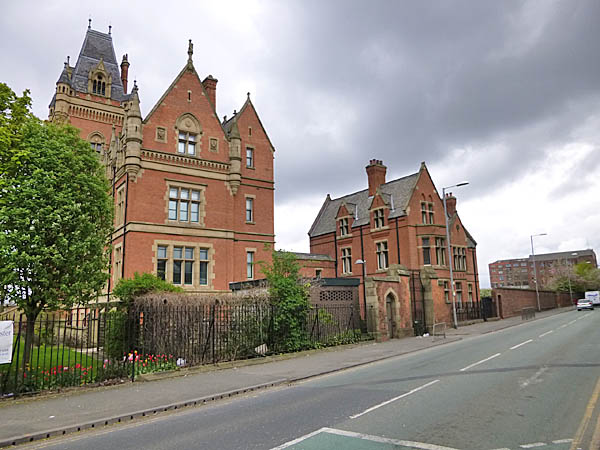   Nicholls' Hospital was founded
by the bequest of Alderman Benjamin Nicholls,
millowner, as a "memorial of his son John Ashton
Nicholls. A plaque inside the building declares
that John Nicholls was , "was dedicated to
who had the improvement of the humbler classes
deeply at heart and laboured earnestly to promote
it, and whose mother testified her interest in the
object of this institution by a supplementary
bequest". John Aston Nicholls had died
in 1859. Benjamin Nicholls became the Mayor
of Manchester in 1887.  Outside the building there are more memorials. 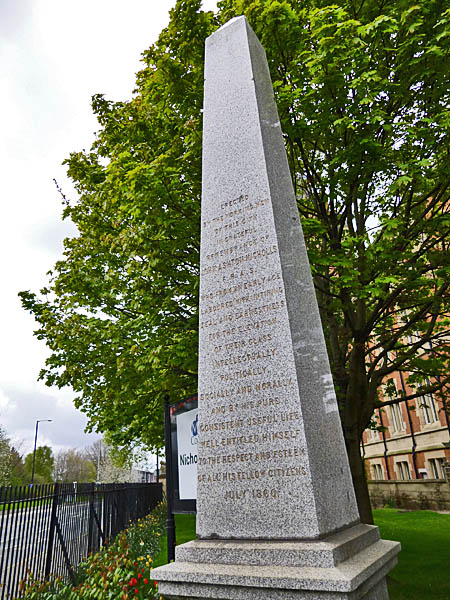 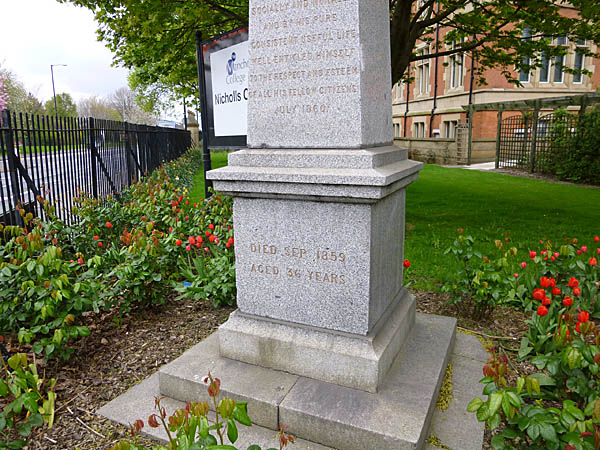 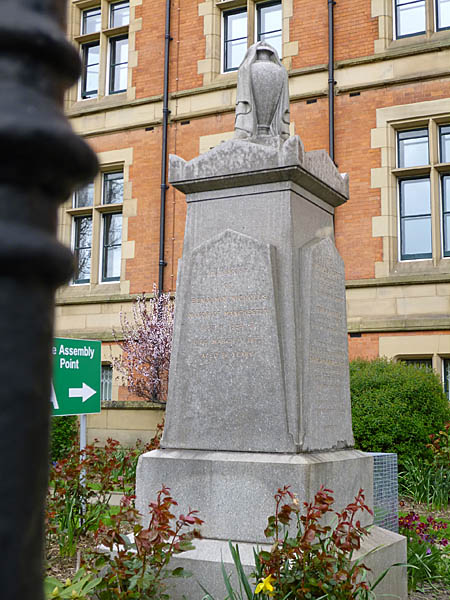 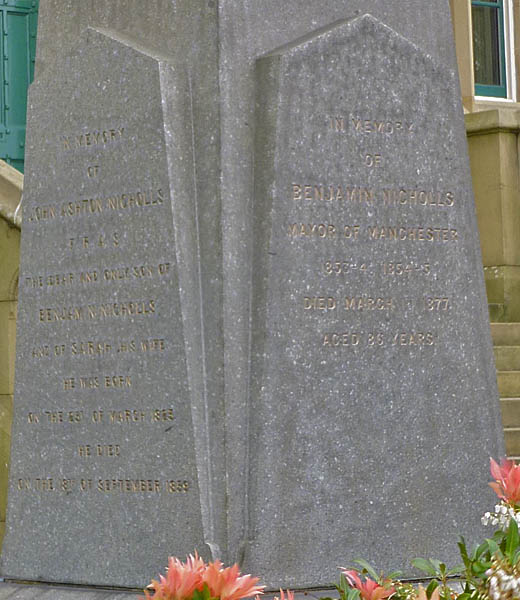 In 1952, under the Charitable Trusts Act,
the Minister of Education made schemes for the
Nicholls Hospital Foundation and for the Chetham's
Hosptal School Foundation, by which the Nicholls
Hospital School was no longer to be carried on as
such, and the boys were to be transferred to
Chetham's Hospital School. The Nicholls Building was
rented by the Education Committee and later
purchased in 1953 to be used as a County Secondary
School for Boys. This was the first
change of direction for the building.
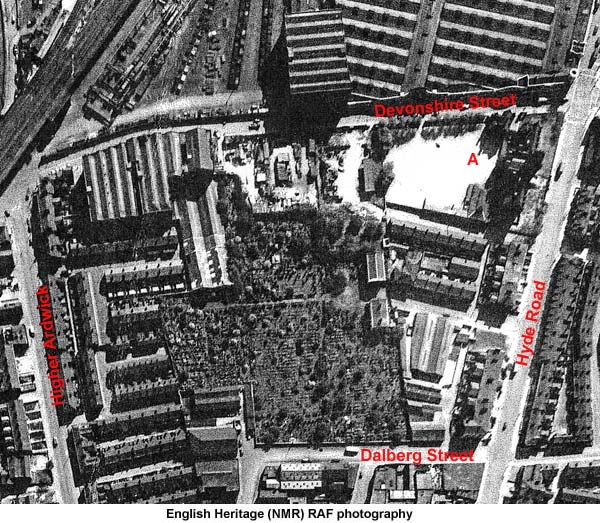
Originally, playing space with
some form of hard surface area for football was
available at the back of the school (marked A in the
image above), bordering up to Ardwick Cemetery, but
this was taken over by extensions to the old building.
The Ardwick Cemetery itself, covering about 5 acres,
had been opened in 1838 when there were no local
authority cemeteries. Below you can
see the original stone gate posts that stood at the
entrance to Ardwick Cemetery. 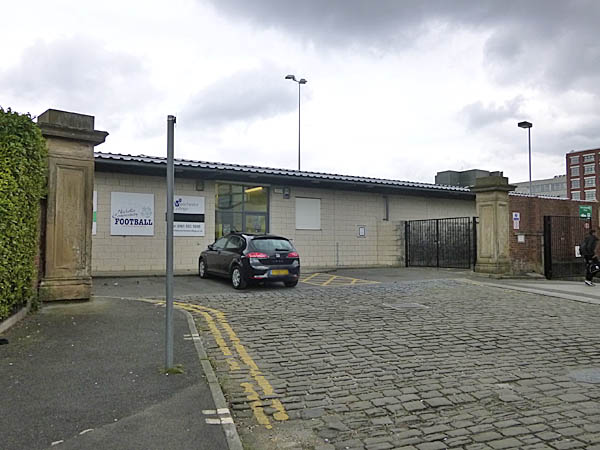
By 1950, all further burials
were prohibitied and the cemetery was transferred to
the Corporation which was empowered to use the land
for school playing fields or as an open space. A
record of the inscriptions on the tombstones was
deposited with the Registrar General, and a copy
placed in the Local History Library of the Central
Library. The burial registers were handed over into
the custody of the Town Clerk. It was decided to
develop the land as a playing field for Nicholls
Secondary School, which, according to a brochure
published at that time, thus became the first
Secondary School in the inner area of the city to be
extended to bring its accommodation up to modern
standards and to have a playing field on its own site.
The work was carried out in 1963/4 and cost £18,275.
The new school began its
life on 1st September, 1967 using all three buildings,
known as "H" Building (former Technical High School);
"A" Building (Ardwick Girls) and "N" Building
(Nicholls Secondary Boys). The Nicholls Building
became the administrative centre of the school.
Later buildings H and A were demolished and the school
moved onto a single site. There was another name
change along the way when it was named in honour of a
former pupil of Ardwick Higher Grade School (the
precursor of Ardwick Technical High) Ellen
Wilkinson. Ellen Wilkinson entered
Ardwick Higher Grade School in 1902. The daughter
of Richard and Ellen Wilkinson of 41 Coral Street in
Chorlton-upon-Medlock, Ellen was a diminuative
red-head. As an adult she was only 4 foot 10
inches tall but she became known as Red Ellen and she
had a formidable personality. The photograph
below, shown with the permission of Peter Harden, shows
the young Ellen with her mother and her brothers Richard
and Harold. Clearly evident is the firery red hair
that became her trade-mark. She inherited it from her
maternal grandmother who had red hair long enough that
she could sit on it. Ellen had ambitions to grow
hers long too but eventually tired of it and had it cut
short.
She can be see third from
the left on the back row in this photograph of the
Ardwick Higher Grade School Girls' Form taken sometime
between 1902 and 1906. 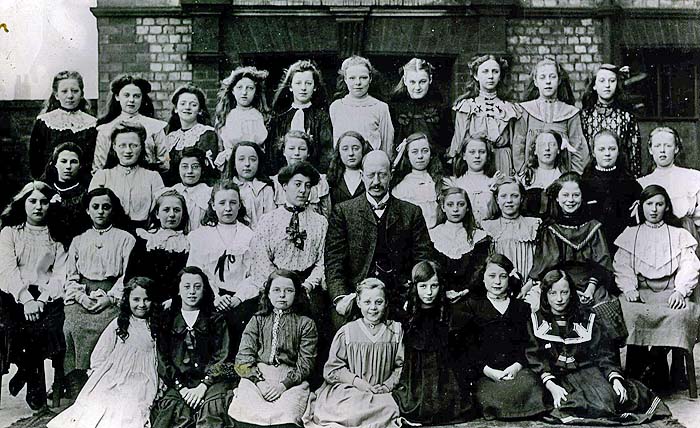
In 1906 Ellen won a £25
pupil teaching bursary which enabled her to attend the
Manchester Day Training College on Princess Street in
central Manchester. She attended College for half
of the week and in the other half taught at Oswald Road
Elementary School. In 1910 Ellen became a student
at Manchester University where she developed her
interest in socialism and politics. A plaque in
her honour was placed in the quad of old university
buildings.
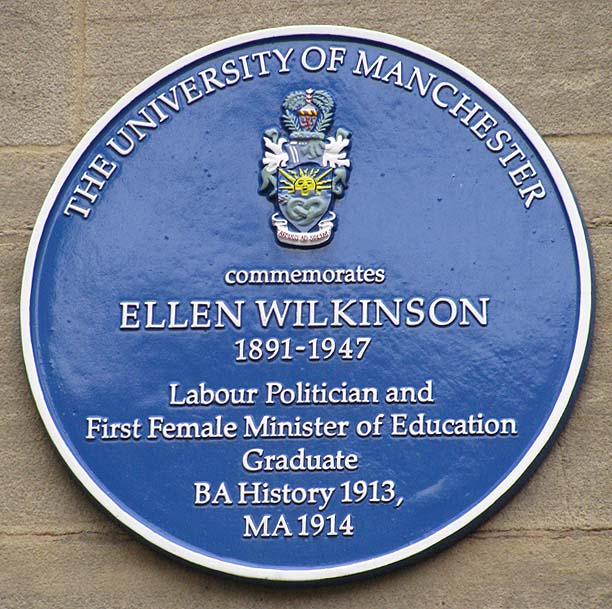 In 1912 she joined the National Union of Women's Suffrage Societies later becoming a district organizer. She also ran the local branch of the Fabian Society. At the age of 24 she was the women's organiser of the Co-operative Employees, eventually gaining pre-eminence within NUDAW - a shopworkers' union. After being active in the women's sufferage movement she was elected as Labour member of Middlesbrough East in 1924. Identified with the far left, in fact Wilkinson was involved with various forms of labour movement activism. She was a tough character and resilient to jibes as both an orator and hardened union negotiator. She lost her seat in 1931. In 1935 she was elected MP for Jarrow, a seat she held until her death in 1947. In 1936 she was one of the leaders of the Jarrow March. 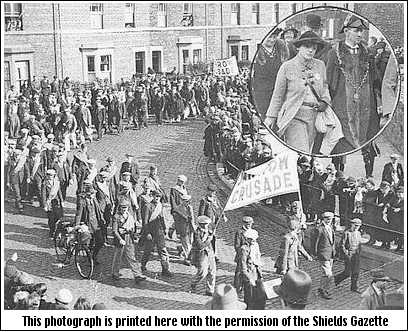 In 1940 Ellen was
appointed Parliamentary Secretary Minister of
Pensions, and Joint Parliamentary Secretary Ministry
of Home Security 1940 - 1945. In 1945 she became
Minister of Education. So it was appropriate
that this Ardwick School should be named the Ellen
Wilkinson High School.
However, once again the
winds of change were blowing in Manchester in 2000
when Ellen Wilkinson was merged with Spurley Hey to
create a new school called Cedar Mount located in
Gorton. Today the Nicholls Hospital building is the Nicholls
Campus of the Manchester City College. It is the
base for sports academies in football, rugby, cricket
and basketball. The college offers excellent sports
facilities including a football centre with a full
size grassed pitch and synthetic five-a-side pitches,
a sports hall and fully equipped gym. The
campuse is also equipped with: IT suites, science
labs, a learning resource centre, a canteen and a
student common room. 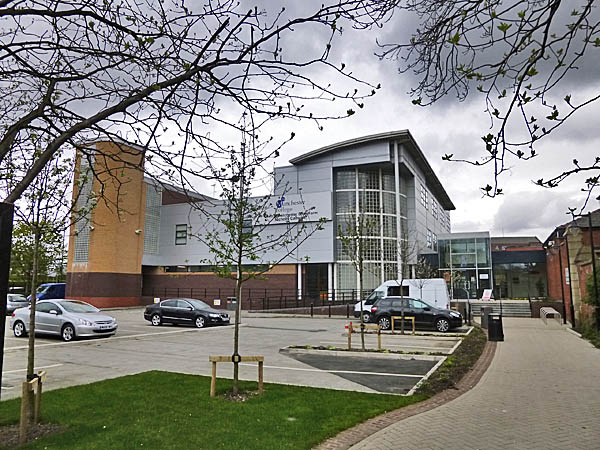 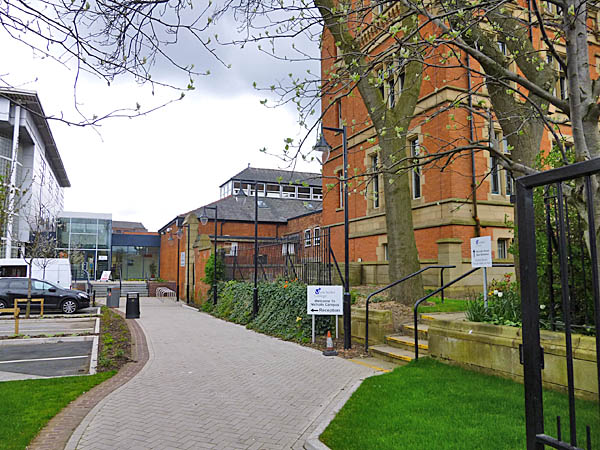 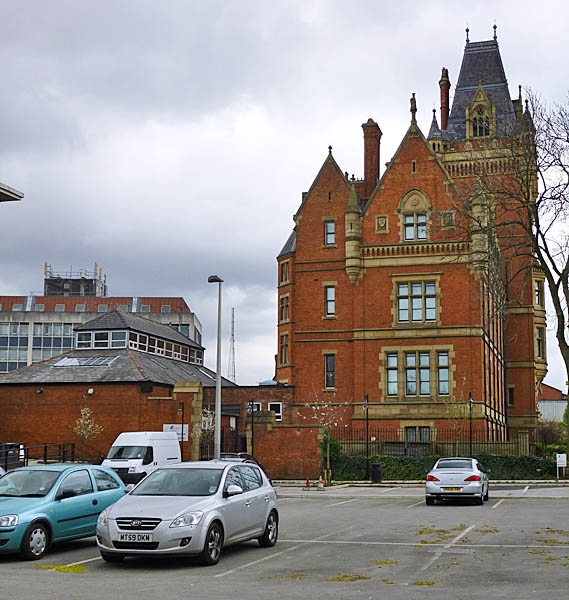 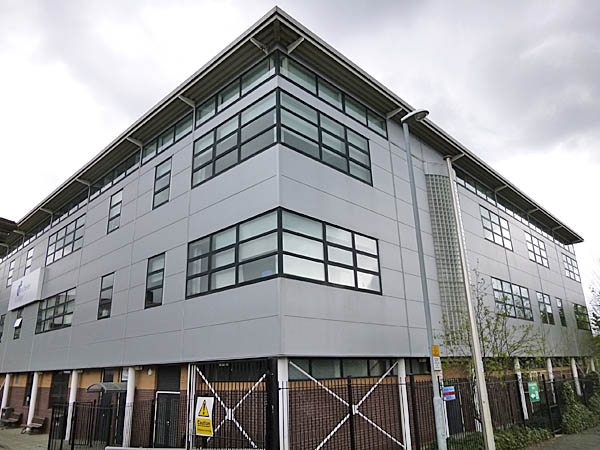 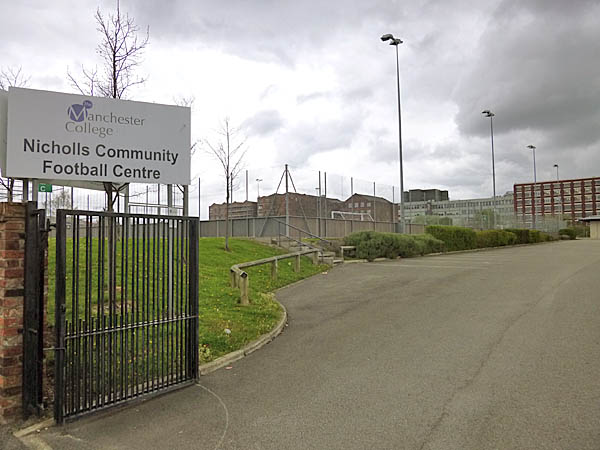 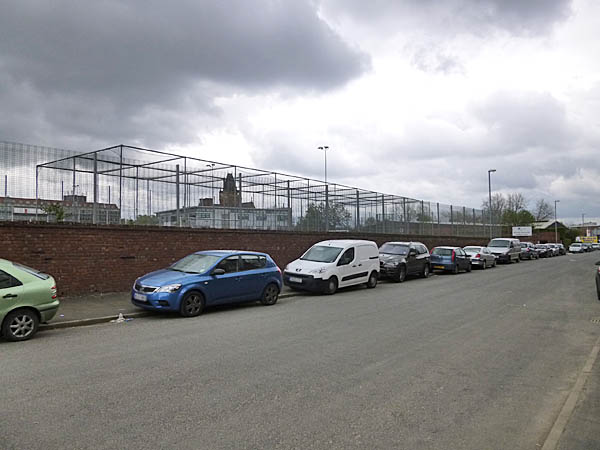 The Nicholls Hospital building is now 132 years old
but it seems to have found a way of reinventing itself
for succeeding generations. |
